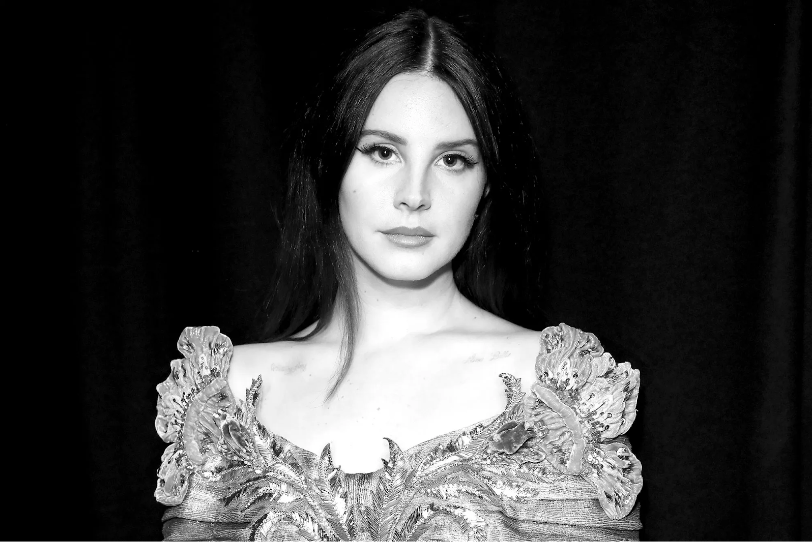Lana Del Rey’s signature glamorously melancholic persona defined my personality in my middle school years. Her sultry, wistful vocals reigned over my headphones on my way back from school, and her lyrics of hopeless devotion to older men slowly lured me into her world of cigarettes, American flags and old Hollywood glam waves.
I cannot relate to Del Rey’s music and I have never wanted to. In fact, I believe the main reason I gravitate towards her music is because she is not relatable at all. Her songs are a means of escape, a universe to get lost in. Listening to her music is like watching a movie, and the cinematic quality of her music certainly contributes to that.
The little-known Elizabeth “Lizzy” Grant began her career at 21 performing under the dim lights of New York City’s nightclubs. Dressed in a t-shirt and jeans, her casual looks countered everything we associate with her today. It was her reinvention into the more enigmatic Lana Del Rey that launched her into mass success. She created an entire persona curated from the best of the past, drawing inspiration from Marilyn Monroe and Priscilla Presley. Her elegant makeup, voluminous hair and flowing dresses transformed her into Lana Del Ray: essentially a caricature of the figure she felt matched her music. People dismissed her as “inauthentic”, but the persona she put on is what we grew to love about her.
Del Rey took the world by storm in 2011 after the viral internet success of her dreamy single Video Games. But Video Games proved to be only the first step of a long and impressive career that would follow her. Her second album, Born to Die (2012), sold over 7 million copies and spent over 315 weeks on the Billboard 200. In her next album, Ultraviolence (2014), she dives deeper into her own sound. Her latest album, Blue Banisters (2021), solidified her reputation as one of the most influential singer-songwriters of the 21st century.
Del Rey’s music was the complete opposite of what topped the charts in the 2010s. While Lady Gaga, Katy Perry and Rihanna dropped catchy, dance-pop anthems, Del Ray remained faithful to her slow tempos and whispery tone. Female popstars preached about confidence and female empowerment, while Del Rey sang about the opposite: abusive relationships, fame and fortune. She took her sadness and made it sexy. Rolling Stone described her as a “vamp of constant sorrow.”
But Del Rey has received as much – if not more – criticism as she has praise since her breakthrough. Her depiction of abusive relationships remains subject of debate, and her disastrous 2012 performance on Saturday Night Live certainly didn’t help her image. While Del Rey has claimed she never glamorized abuse, the image she cultivated did feel like romanticization. In Ultraviolence, Lana repeats the lyrics: “He hit me and it felt like a kiss”. In her defense, placing the burden of being “a good influence” on celebrities doesn’t seem fair. She was writing lyrics referencing her own experiences, from her own flawed perspective.
Her more recent insensitive social media remarks on feminism and race prove to us that in the current age of social media, maintaining a truly mysterious facade is nearly impossible. But it was Del Rey’s persona that ensured that these critiques never escalated into full-on controversy. “You couldn’t stay mad at Lana Del Rey,” Vulture Magazine states, “It would have been like getting mad at Betty Boop.”
While Del Rey rose to fame representing a bygone era of America, it seems now her idea of the American dream has shifted. On her Grammy-nominated album Norman Fucking Rockwell! (2019), she sticks with her Americana image, but goes down a more progressive path. She’s tired of the glitz and glamor. She now yearns to return back to the simple, modern-day small-town America, perhaps even back to being Lizzy Grant. “It’s beautiful how this deep normality settles down over me,” she sings on the title track.
While Del Rey’s evolution as an artist has grown away from her debut, we can see how pop music has now grown towards it. Artists like Billie Eilish, Lorde, The Weeknd, Kevin Abstract and Lauren Jauregui have all acknowledged Del Rey’s impact on their own style. Her sad-girl lyrics, soft vocals, and baroque, chamber-pop sound with hip-hop influences can be heard all over the Billboard Hot 100 today.
Lana Del Rey will forever be our generation’s embodiment of glamor, nostalgia and melancholia. She’s an evolving artist, and now it seems she is growing tired of separating Lizzy and Lana. Her influence on today’s music is a testament to the fact that despite constant criticism, she knew exactly what she was doing.







Brilliant article. A must read.